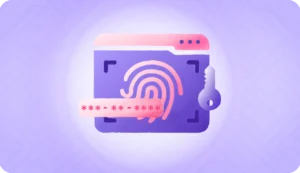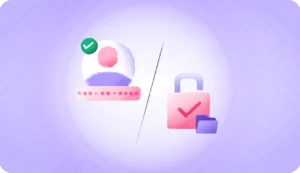Property tax assessment has always been difficult, and the COVID-19 pandemic has made it worse. We investigate the problems that tax assessors face. Then, we explore how AI driven automated image analytics can enable fair and equitable tax administration. Lastly, we introduce TrueChange.
Legacy Issues
The world is a big place and every country and county is different. Yet, when it comes to property assessment, some of the traditional problems are the same. Property owners, willingly or unwillingly, fail to get permits. Or else they make modifications that differ from the permits that they have applied for. This produces false positives because physical inspections are being hindered by the pandemic. In either case, the assessments fall short of industry norms.
A large team of assessors that periodically visit land parcels can help achieve higher compliance and lower property tax leakage. However, this can be costly. Also, taxpayers don’t like frequent visits from assessors because it implies a lack of trust.
How many land use violations are there for assessors to identify? A county may have modifications happening in anywhere from 2% to 10% of its land parcels depending on whether it is well-established or just developing. Of these, how many have no permit, or an incorrect permit? In one rare case, tax investigators in Greece looked at Google Earth and found 16,974 swimming pools attached to villas in an area where official records showed just 324 swimming pools.

How do local authorities know which land parcels to visit? Local assessors inspect all properties according to a predetermined frequency. Experienced assessors know what to look for. Additionally, local contractors, local agencies, and vigilante neighbors report unauthorized changes.
Use of Imagery
Aerial imagery taken by low flying planes and drones and satellite imagery has been the next big thing in property assessment for almost a decade. An aerial image of an area can be compared to an image of the same area from earlier to identify land parcels which have changed. These identified land parcels can then be visited by assessors, if needed. Thus, each assessor will be more productive and the county can manage the workload with a smaller team. Easy!
Except that this is anything but easy. In our conversations with assessors, we learned that existing solutions come with a broad array of problems
Problems with existing change detection systems:
1. Missing changes without permits – Manual change detection in aerial images misses land parcels of interest. So does automated change detection.
2. Time consuming and slow – Change detection analysis takes 2-3 months (sometimes more) pushing revenue recognition to the next cycle.
3. Poor reliability – Because of low accuracy of current systems there are too many false results, or irrelevant ones.
4. No prioritization by value – A list of land parcels with changes are un-usable unless they can be filtered and prioritized by value.
5. Escalating Costs – Buying imagery frequently can be expensive even if costs are shared between departments. Plus, analyzing costs additional money.
6. Inflexible / un-customizable software – The final output of change detection software doesn’t integrate with existing software.
What is the cadence of aerial imagery that is commercially available? Aerial imagery is available in most counties in the U.S. at an annual or bi-annual cadence. In some areas, it is now available at a 6-month cadence.
The Double Impact of COVID-19
World over, the onus remains on the local government to maintain good assessment and collection results. But pandemic induced local shutdowns mean that assessors can’t make as many visits as before.
Furthermore, since the local government finds it hard to make visits and assess changes, the general public might have an incentive to take a risk (unauthorized change) as they may believe that they are less likely to be found out. So non-compliance goes up.
How long will the impact of COVID-19 be? Estimates vary. Per Bill Gates, whose foundation is funding some of the vaccine efforts, “for the rich world, we should largely be able to end this thing by the end of 2021, and for the world at large by the end of 2022.”
Enter Artificial Intelligence
Every once in a while a new technology arrives that has the potential to be a game-changer. We saw this with computers in the ’80s, the internet in the ’90s, mobile phones in the ’00s, cloud software in the ’10s. The 20’s will belong to AI.
In many industries, AI has already made possible what was previously completely impossible. We all know the popular examples of Maps, Siri and Alexa. At HyperVerge, in 2019, we powered telecom companies Vodafone and Reliance Jio to correctly ID 250 million people during their new SIM-card purchase journey, each in real-time. (In India, every new SIM-card must be issued against a verified ID matched to the applicant per law.) A year prior to that, we created an energy map (digital twin) of Texas using only satellite imagery.
AI and Property Tax
Thus far, we have discussed various problems faced by assessors. But what AI can do to help property tax assessment?
In a nutshell, AI driven feature extraction and change detection can automate analytics on aerial imagery. By comparing images from two different time periods, land parcels where there are changes, can be flagged. These land parcels can then be classified as per the change detected (new building, expansion, swimming pool, etc). The end product is a map layer that can be imported into the county’s existing software and can be used to plan on-ground assessment visits.

Further, new solutions are possible when the AI-assisted software can communicate with other software being used the county. Land parcels, where changes are found, can be classified and prioritized according to estimated assessed values. Software can check whether the identified land parcels have the required permits. Priority lists of parcels, that assessors should focus their attention, can be auto-generated.

Finally, AI identified boundaries of buildings from aerial images can be compared with the boundaries of sketches available with local governments. This can be used to flag parcels where there is a mismatch. Perhaps the sketches need to be updated.
Introducing TrueChange
At HyperVerge, we worked to create an ideal workflow that uses the power of AI, works with existing systems, and solves the real problems that assessors face. As noted in table 1., We call it TrueChange.

Key Benefits of TrueChange
1. Detect without permits – Increase compliance and revenue by detecting violations with or without permits.
2. Faster analysis – Go from images to results in a matter of 3 weeks increasing efficiencies and productivity.
3. Higher accuracies – Accuracies of 99% greatly reduces field visits translating to more appraisals per appraiser.
4. Prioritize High Value Changes – Filter down to the highest value changes by size of change, asset type, location, etc.
5. Increased Revenue – Faster analysis + detecting all changes ensures increased revenue that can be realized in the same year.
6. Easy to integrate – Easily integratable with existing CAMA software or workflows. Outputs can be delivered in any format: polygons, web viewer, CSV files, etc.
Free Land Parcel Assessment
Having started in 2010 as a research lab, HyperVerge has been around for a while. With presence in the US, Europe, India and SEA, we are a global AI startup with products in financial services, telecom and geospatial. We count large enterprises like Airbus, Vodafone, Reliance Jio, State Bank of India, FE Credit, etc. as our clients. We also were part of the US Air Force’s Catalyst Space Accelerator in 2019.
We currently have a 1,000 land parcel TrueChange pilot program. You could take our technology for a test drive for free.
Inputs needed from the country office – (a) Imagery from two appraisal years, (b) 1000 land parcels where changes need to be detected.
Within a week of receiving the data, we will return these – (a) A list of land parcels which have changed between the two appraisal years, (b) Shape-files/boundaries of the changes with the area that has changed, (c) Categorization of units into new construction, enhancement, demolition and other changes.
Contact us at rinkesh@hyperverge.co




